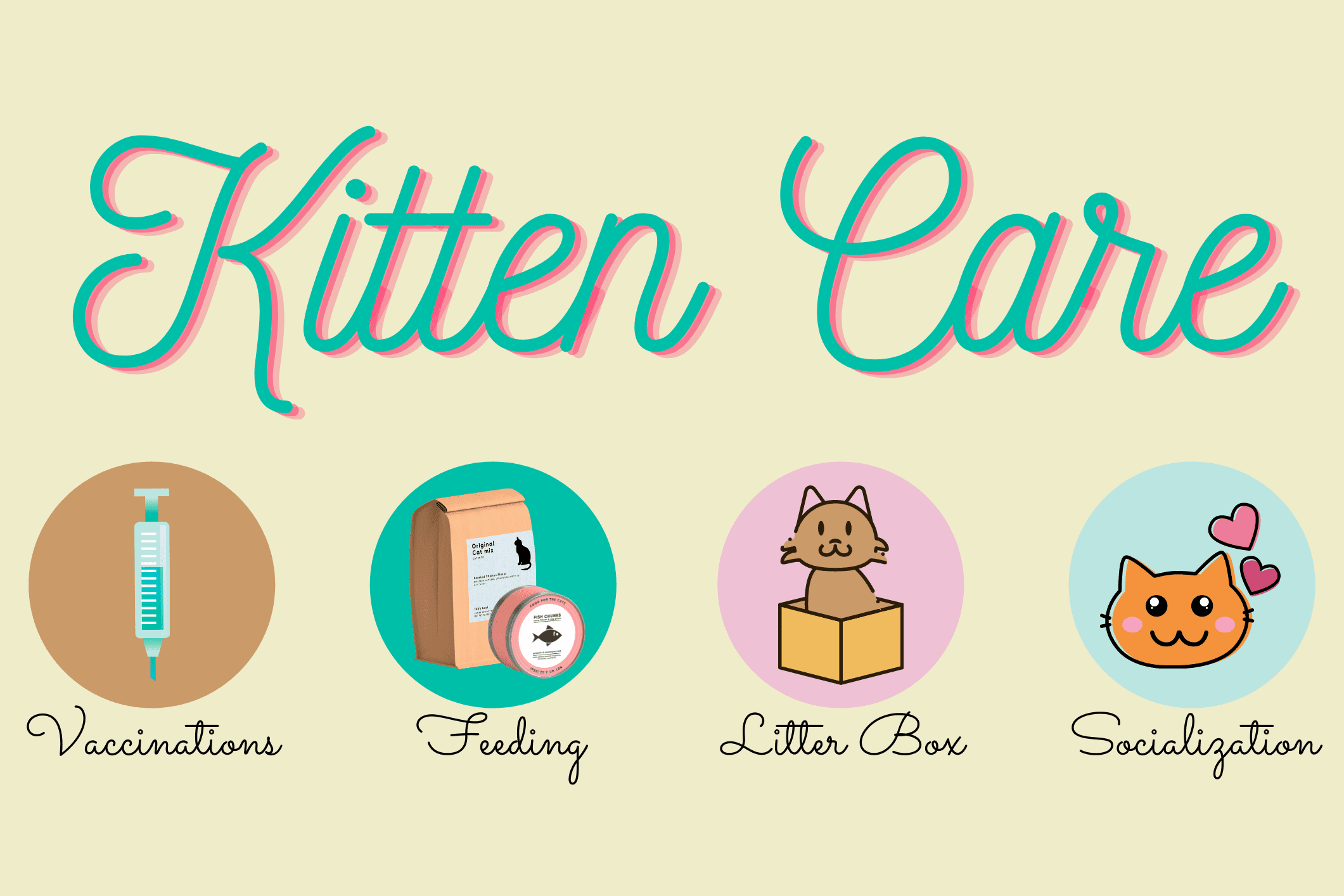When it comes to cuteness, few critters can compare to kittens. If you’ve just acquired a kitten (or two), you’re probably learning all about kitten care. You want to do what you can to ensure that your adorable baby grows into a healthy adult. Proper feeding is a big part of the health equation. After the first four weeks of mother’s milk, a kitten gradually transitions to kitten food, and is completely weaned at about eight weeks. Here’s what you need to know once you’ve brought your kitten home.
Introducing a New Kitten to its New Environment
A cat is naturally inclined to investigate its new surroundings. It is suggested that the cat’s area of exploration be limited initially so that these natural tendencies do not create an unmanageable task. After confining the cat to one room for the first few days, you should slowly allow access to other areas of the home.
Vaccinations
There are many diseases that are fatal to cats. Fortunately, we have the ability to prevent many of these by using very effective vaccines. In order to be effective, these vaccines must be given as a series of injections. The routine vaccination schedule will protect your kitten from five diseases: distemper, two respiratory viruses, feline leukemia and rabies. The first three are included in a combination vaccine that is usually given at 8, 12, and 16 weeks old. It is boostered at 6 months of age. Feline Leukemia vaccine is given at 12 and 16 weeks, and Rabies vaccine is given at 16 weeks of age.
Feeding a Kitten
Diet is extremely important in the growing months of a cat’s life, and there are two important criteria that should be met in selecting food for your kitten. Cats require much higher levels of protein in their diet than do dogs. Unfortunately, protein is the single most expensive ingredient in cat foods. Consequently, bargain-brand or cheap cat foods contain low-grade, poorly digestible protein.
We recommend a NAME-BRAND FOOD made by a national cat food company (not a generic or local brand), and a form of food MADE FOR KITTENS. This should be fed until your kitten is about 12 months of age. We recommend that you only buy food that has the AAFCO certification. Usually, you can find this information very easily on the label. AAFCO is an organization that oversees the entire pet food industry. It does not endorse any particular food, but it will certify that the food has met the minimum requirements for nutrition. Most of the commercial pet foods will have the AAFCO label. Generic brands often do not have it. Two brands that we feel are most reputable are Science Diet and Royal Canin.
It’s important to offer kittens a variety of foods so they will be more accepting of various diets later
And don’t forget to provide plenty of fresh water — it’s a key to keeping cats of all ages healthy.
How can I ensure that she will use the litter box?
It is important to make sure that the box is easily accessible to the kitten (not isolated in a far corner of the house) especially after periods of play, napping or eating. The box should not too be tall for her to easily get into. Also, we suggest that you not use hoods on the box. If not cleaned often enough the ammonia smell can build up and deter a picky feline. Remember the formula: one litter box per cat plus one. If you have one cat you should have two litter boxes. Two cats – three litter boxes, and so on. Yes, cats are easier to housetrain than dogs but in the beginning it is still important to supervise them and prevent any accidents. If she is sniffing around or acting as if she needs to eliminate, carry her to the litter box and reward her with a food treat.
Socialization
The Socialization Period for cats is between 6 and 20 weeks of age. During that time, the kitten is very impressionable to social influences. If it has good experiences with men, women, children, dogs, other cats, etc., it is likely to accept them throughout life. If the experiences are absent or unpleasant, it may become apprehensive or adverse to any of them. Therefore, during the period of socialization, we encourage you to expose your cat to as many types of social events and influences as possible.
